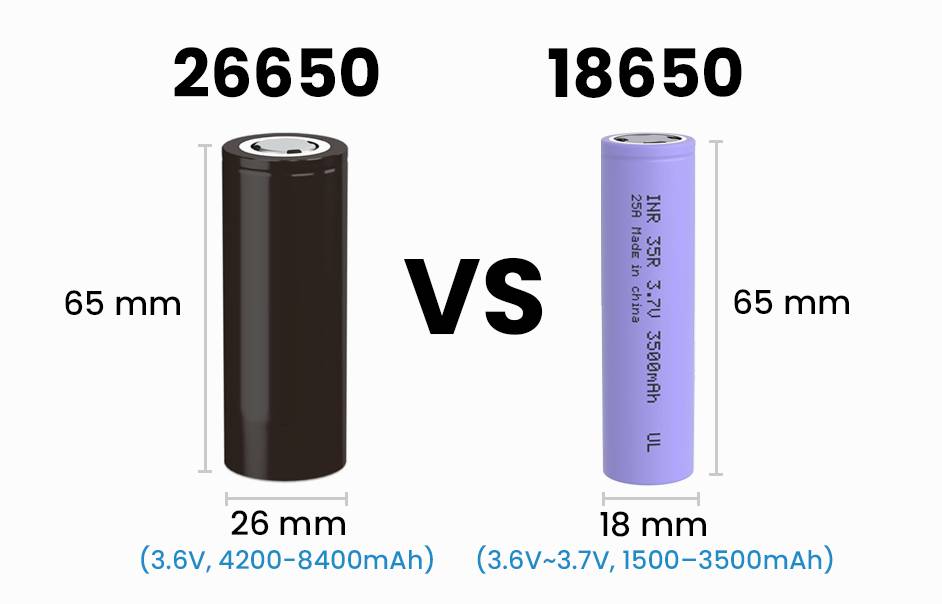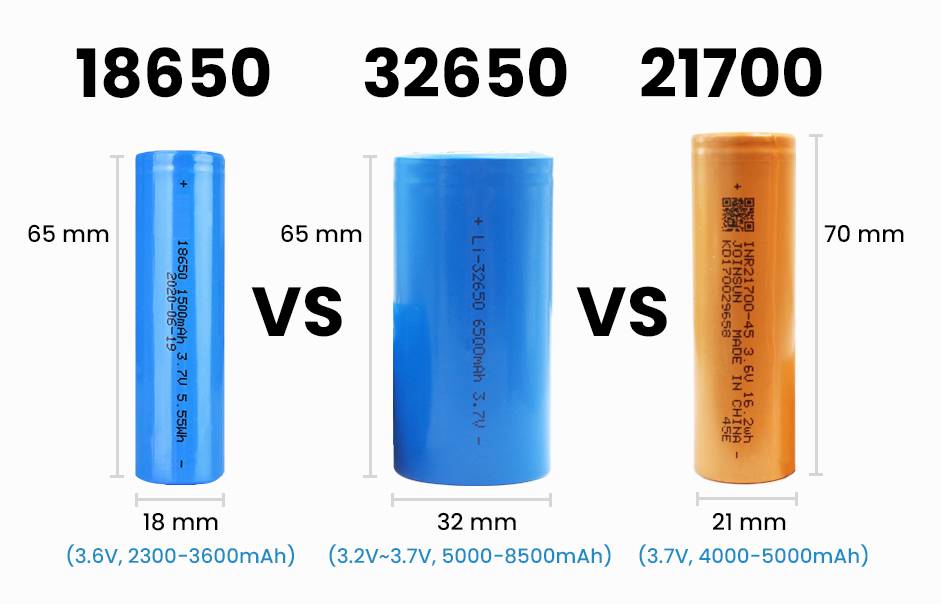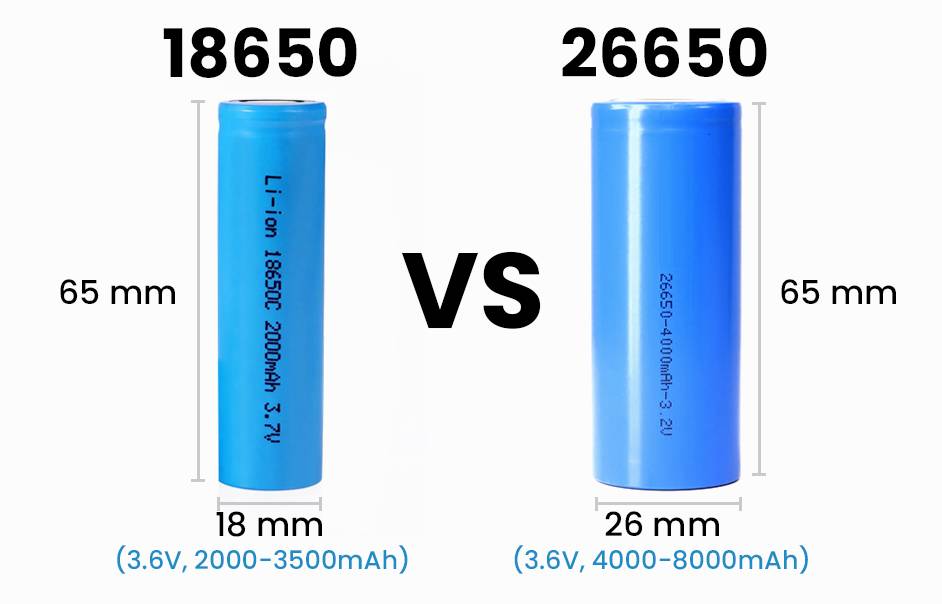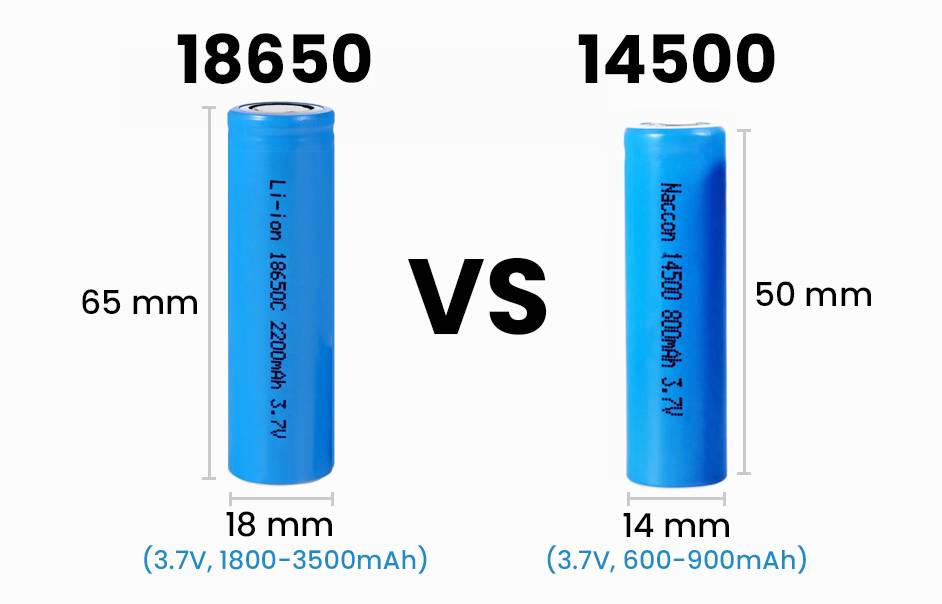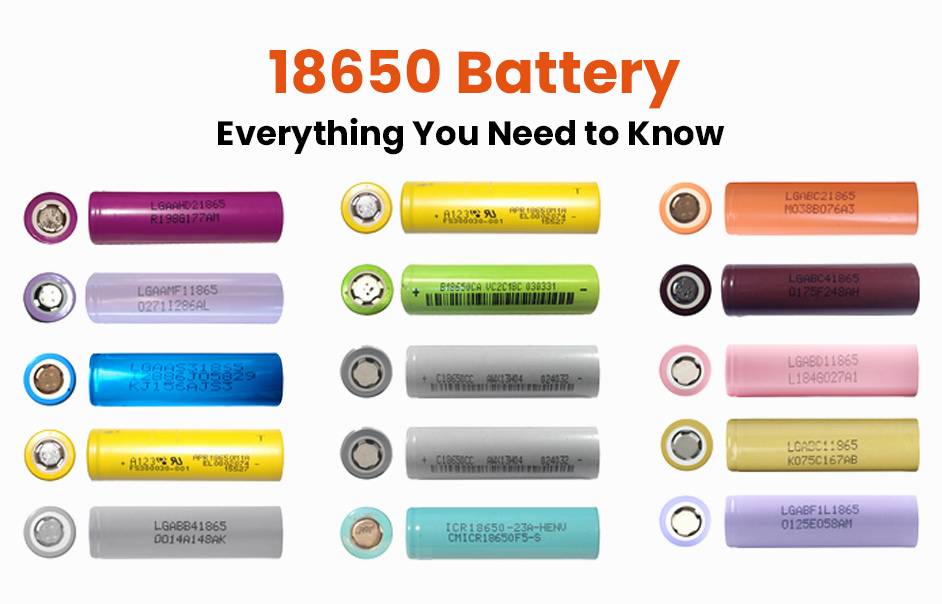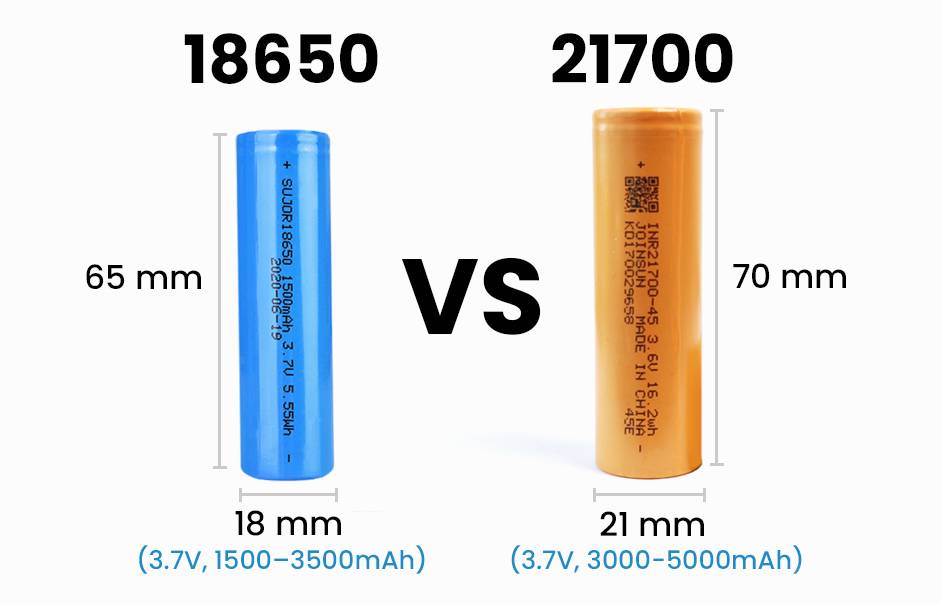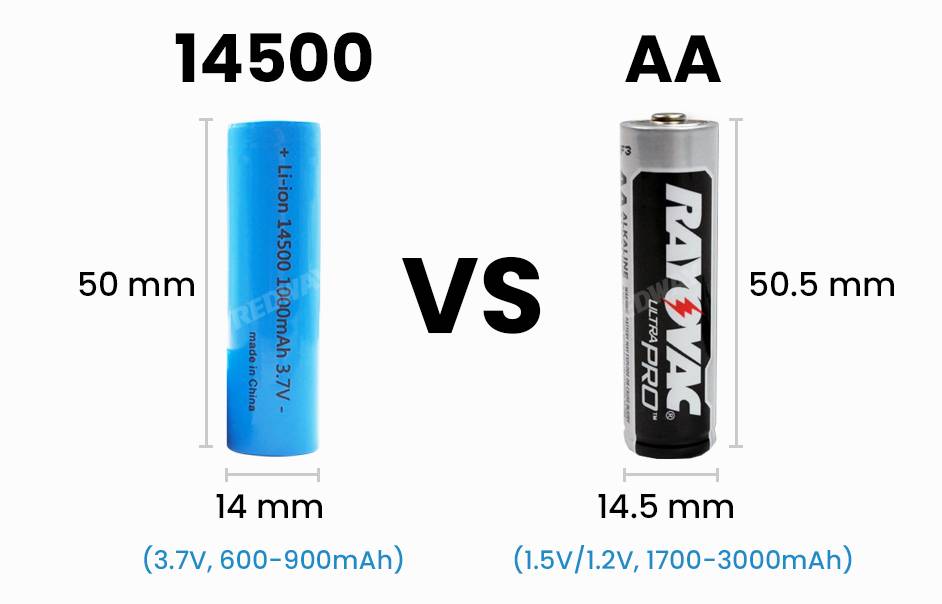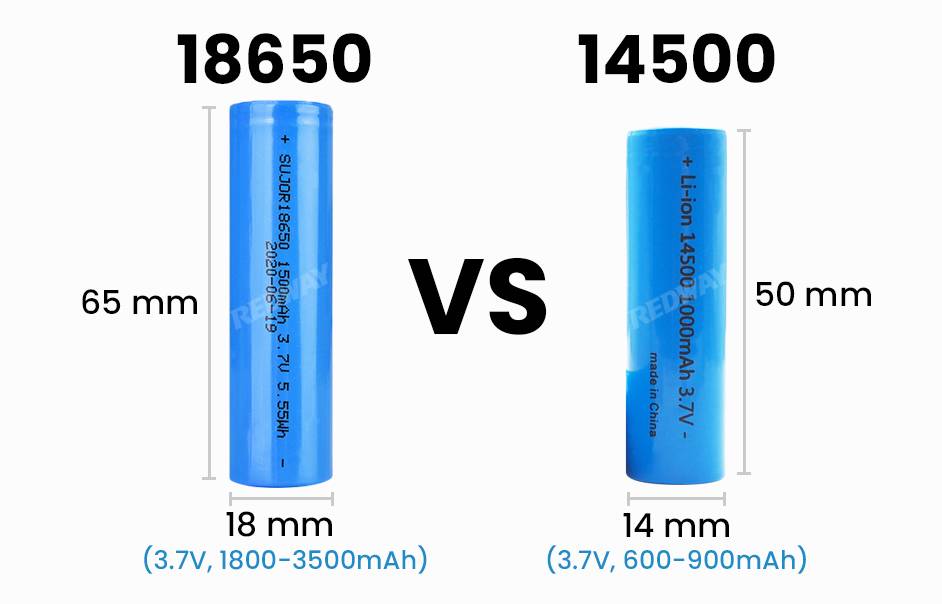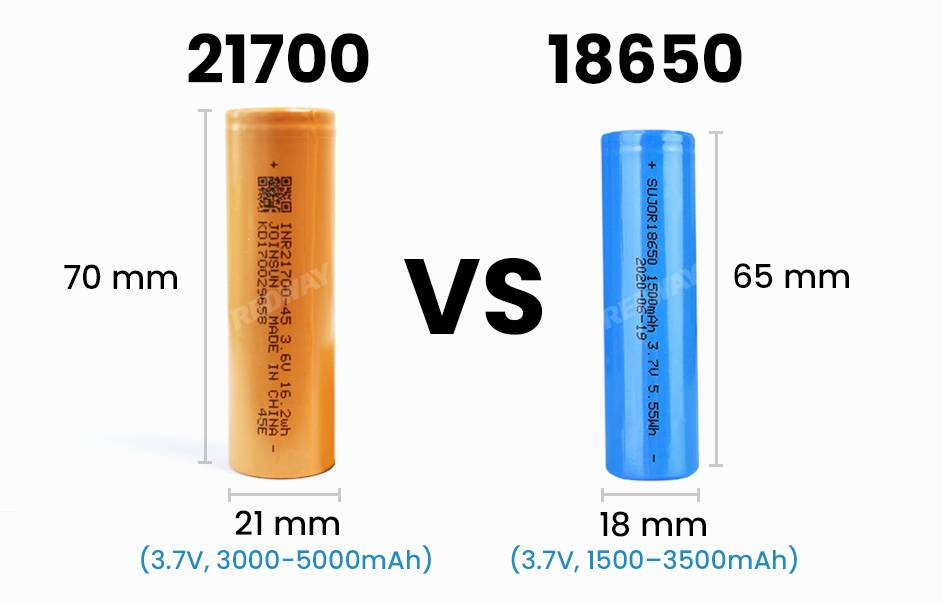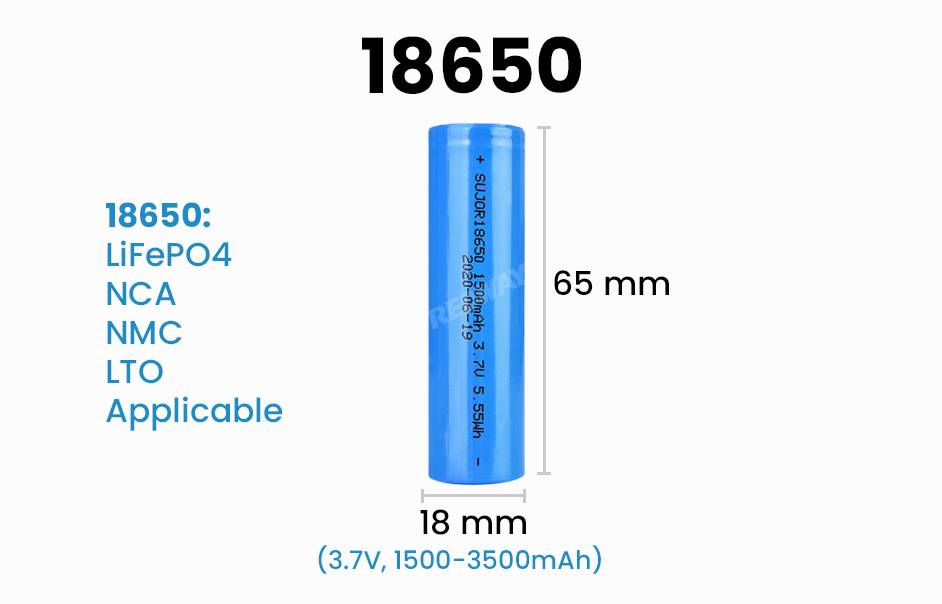
Blog
Comparing 14500 and 18650 Batteries: A Comprehensive Guide
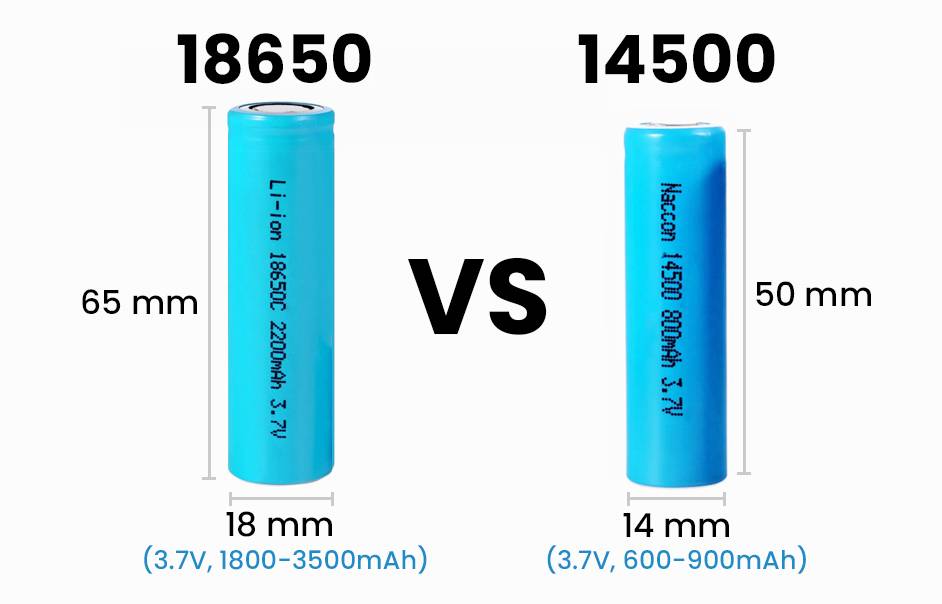
14500 and 18650 batteries differ in size, capacity, and usage. The 14500 is smaller (14mm x 50mm) with lower capacity, often used in flashlights and small electronics. The 18650 (18mm x 65mm) offers higher capacity and discharge rates, suited for laptops, eBikes, and energy storage. Redway Power leverages 18650 cells for high-performance lithium battery packs with longer lifespan and efficiency.
What Are the Physical Differences Between 14500 and 18650 Batteries?
14500 batteries are compact with 14mm diameter and 50mm length, resembling AA size. 18650 batteries are larger, 18mm diameter and 65mm length, providing higher energy density. Physical size affects device compatibility, housing design, and energy storage capacity.
How Do Capacities of 14500 and 18650 Batteries Compare?
14500 batteries typically offer 600–1000mAh, while 18650 cells range from 2000–3500mAh or higher. The larger capacity of 18650 batteries supports longer runtime and higher current applications, making them ideal for electric vehicles and high-drain devices.
What Are the Voltage Ratings of 14500 and 18650 Batteries?
Both batteries generally have a nominal voltage of 3.6–3.7V. Fully charged voltage reaches 4.2V. Voltage consistency is crucial for device performance, and Redway Power ensures precise voltage management in lithium battery packs using advanced BMS.
How Do Discharge Rates Differ Between 14500 and 18650 Cells?
18650 batteries usually handle higher continuous discharge rates (up to 20A–30A) compared to 14500 (1–2A). This allows 18650 cells to power high-drain devices, while 14500 is suitable for low-power electronics. Redway Power optimizes discharge rates in their custom battery packs for industrial applications.
Which Applications Are Best Suited for 14500 Batteries?
14500 cells fit small devices like flashlights, laser pointers, portable gadgets, and some hobby electronics. Their compact size limits capacity but enables lightweight designs, making them ideal for devices requiring portability over high energy output.
Which Applications Are Best Suited for 18650 Batteries?
18650 batteries excel in laptops, eBikes, power tools, EVs, and energy storage. Higher capacity, discharge rate, and thermal stability make them suitable for demanding applications. Redway Power utilizes 18650 cells for modular battery packs, balancing safety and performance.
Can 14500 Batteries Be Interchanged With AA Alkaline Batteries?
Yes, 14500 batteries match AA dimensions, but they are lithium-based with higher voltage (3.7V vs 1.5V for alkaline). Using 14500 in devices expecting 1.5V can damage electronics, so voltage compatibility must be checked before interchange.
How Do Lifespan and Cycle Count Compare?
18650 batteries generally offer 300–500 cycles, sometimes more with high-quality cells. 14500 batteries provide fewer cycles, typically 200–300. Cycle life depends on charge/discharge rates, temperature, and management systems. Redway Power integrates BMS to maximize cycle life and safety.
What Are the Safety Considerations for 14500 and 18650 Batteries?
Both batteries can overheat or explode if short-circuited, overcharged, or exposed to high temperatures. 18650 packs often include protective circuits and temperature sensors. Redway Power ensures strict quality control and BMS monitoring to prevent hazards in battery packs.
Chart title: Key Specifications of 14500 vs 18650 Batteries
| Feature | 14500 Battery | 18650 Battery |
|---|---|---|
| Diameter | 14 mm | 18 mm |
| Length | 50 mm | 65 mm |
| Capacity | 600–1000 mAh | 2000–3500 mAh |
| Nominal Voltage | 3.7 V | 3.7 V |
| Max Continuous Current | 1–2 A | 20–30 A |
| Typical Cycle Life | 200–300 | 300–500+ |
| Common Applications | Flashlights, gadgets | Laptops, eBikes, power tools |
How Do Price and Availability Compare?
14500 batteries are generally cheaper due to smaller size and lower capacity. 18650 cells are more expensive but provide better energy efficiency per volume. Redway Power balances cost and performance in their industrial battery solutions.
What Are Charging Differences Between 14500 and 18650?
Both require lithium-specific chargers with constant current/constant voltage profiles. 18650 packs may include multi-cell balancing to ensure even charge distribution, reducing risks of overcharge and extending lifespan.
Redway Power Expert Views
“Choosing the right cell depends on the application’s energy and current demands,” explains a Redway Power expert. “14500 suits compact devices, but 18650 is the backbone of high-performance battery packs. At Redway Power, we integrate top-grade 18650 cells with intelligent BMS for safety, longevity, and efficiency in EV and industrial applications.”
Conclusion
14500 and 18650 batteries serve distinct purposes: 14500 for compact low-power devices, 18650 for high-capacity, high-drain applications. Understanding differences in size, capacity, discharge, and safety is essential for optimal battery selection. Redway Power leverages 18650 cells in high-performance lithium packs, delivering reliable, safe, and long-lasting energy solutions.
FAQs
Can 14500 batteries replace 18650?
No, 14500 cannot meet the capacity and current requirements of 18650 applications.
Are 18650 batteries safe for DIY projects?
Yes, with proper protection circuits and BMS.
How many 14500 cells equal one 18650 in capacity?
Approximately 2–3 14500 cells match one 18650 depending on capacity.
Can 18650 batteries be used in series or parallel?
Yes, they are commonly configured in series/parallel packs for voltage and capacity scaling.
What is the main advantage of 18650 over 14500?
Higher capacity, higher discharge rate, longer lifespan, and suitability for demanding applications.




